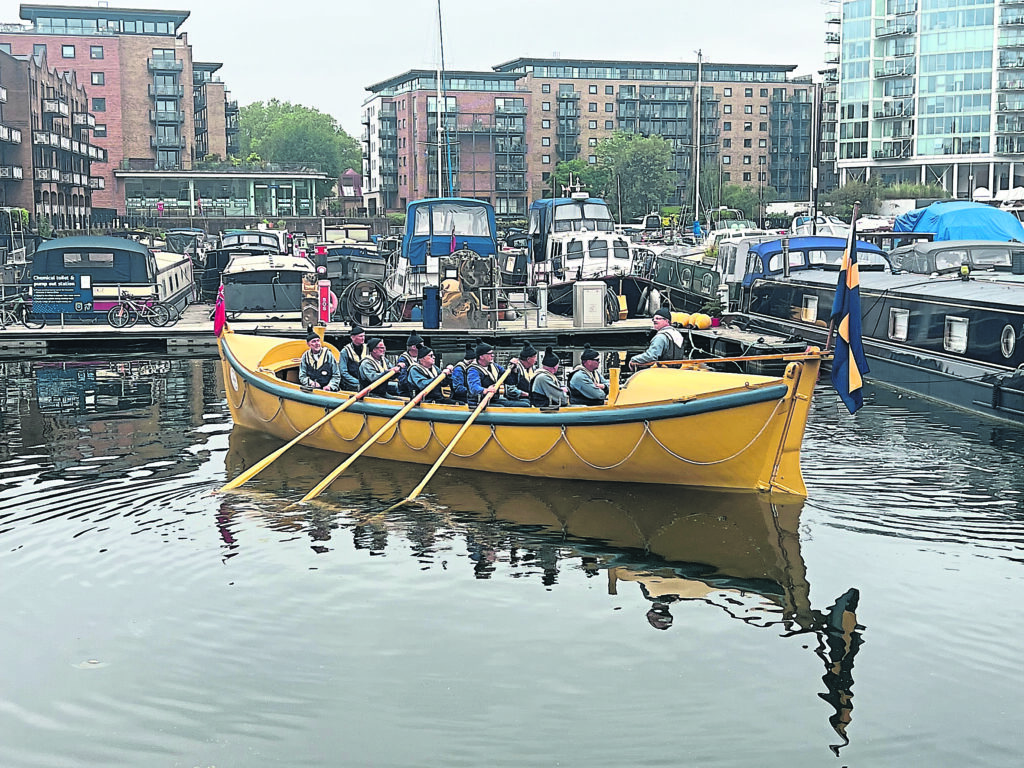A 19th CENTURY lifeboat has been rowed across the Thames to Limehouse Basin in London, site of the yard where she was built.
There, a commemorative plaque was unveiled to mark the visit and the RNLI’s 200th anniversary.

Unveiling the plaque, Canal & River Trust chairman David Orr said: “The return of Lifbåt 416, built here at Limehouse, is living heritage. In its heyday, Limehouse was the place that made the connection between the sea and the whole of the canal network.
“What events like this reinforce is that when you look at canals, and the locks and the engineering that sustains them now, this is the heritage. It is the stuff that was built 250 years ago and is still in use.”
Lifbåt 416, a self-righting lifeboat built to the Royal National Lifeboat Institution’s specification at Forrestt & Son, was a gift to King Karl XV of Sweden from Queen Victoria’s wine merchant James Gunston Chillingworth in 1868.
The pioneering self-righters built by Forrestt were tested by being dropped into the water on Limehouse Cut – London’s oldest canal, which opened in 1770.

Saving lives
After an illustrious career saving 80 lives on the treacherous waters around Skanör, southern Sweden, Lifbåt 416 answered her last callout in 1939. She spent more than 45 years on display outside Falsterbo museum before her restoration to seaworthiness in 1992.
In recognition of the boat’s origins, and to mark the bicentenary of the RNLI, the Skanör-Falsterbo Lifbåtsroddarelag club arranged for Lifbåt 416 to return to the UK by freight, participate in an event at the RNLI headquarters in Poole, Dorset, before returning home to Limehouse.
CRT heritage specialist Phil Emery added: “This fantastic project draws attention to the fascinating maritime industrial heritage of Limehouse. This whole area was filled with factories and workshops – shipbuilders, chandlers, sailmakers and latterly engine and pump manufacturers.

“Forrestt & Son was founded here in 1788, long before the Regent’s Canal arrived in 1820, and the self-righting lifeboats were the specialist product of the yard. Boats were literally dropped into the Limehouse Cut to test their watertightness and self-righting capabilities.”
He added: “We’ve carefully considered the location of the plaque and I’m delighted that visitors will be given this insight into the heritage of Limehouse in a prominent position for all to enjoy.”




